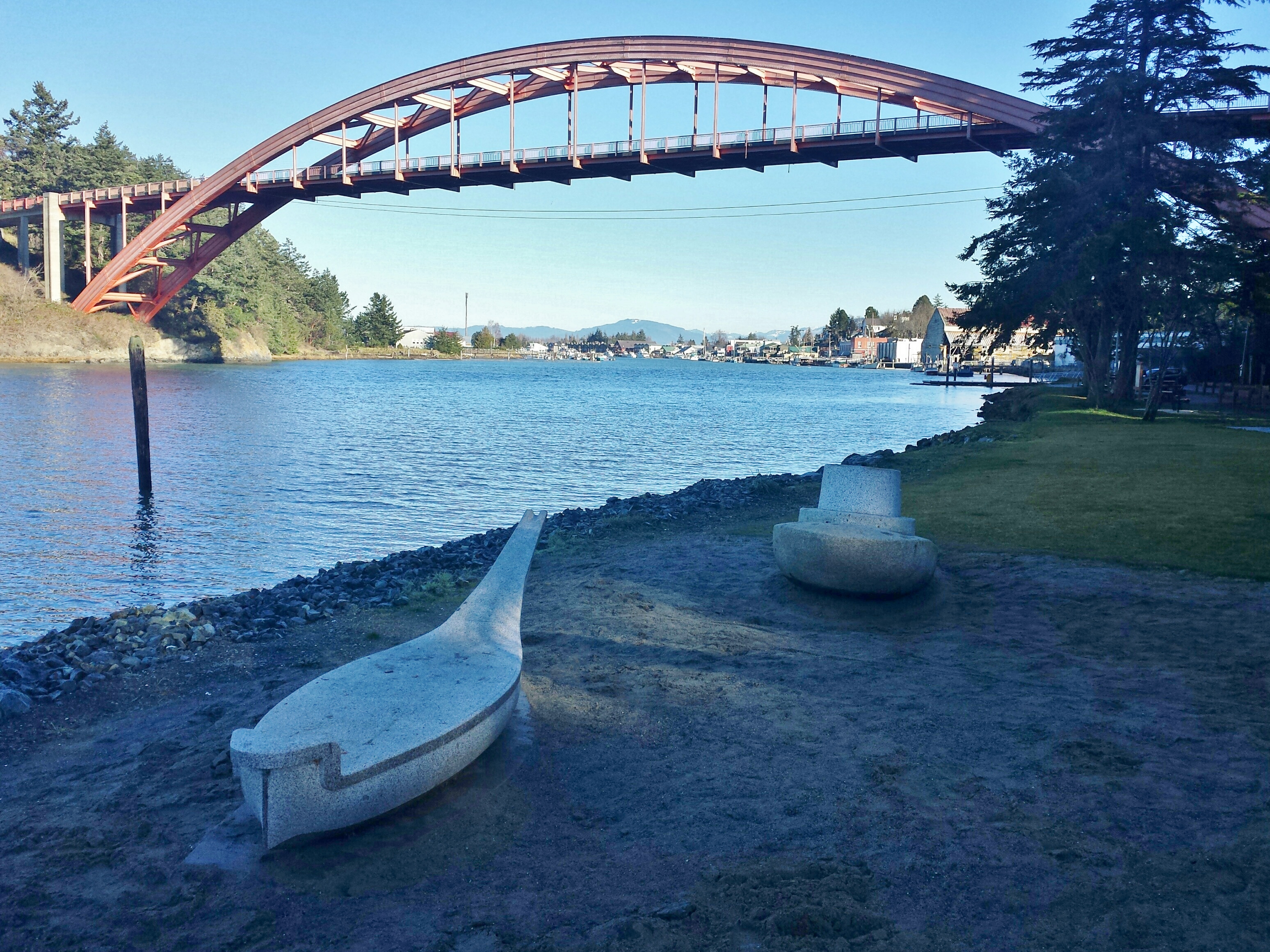IN LA CONNER, WASHINGTON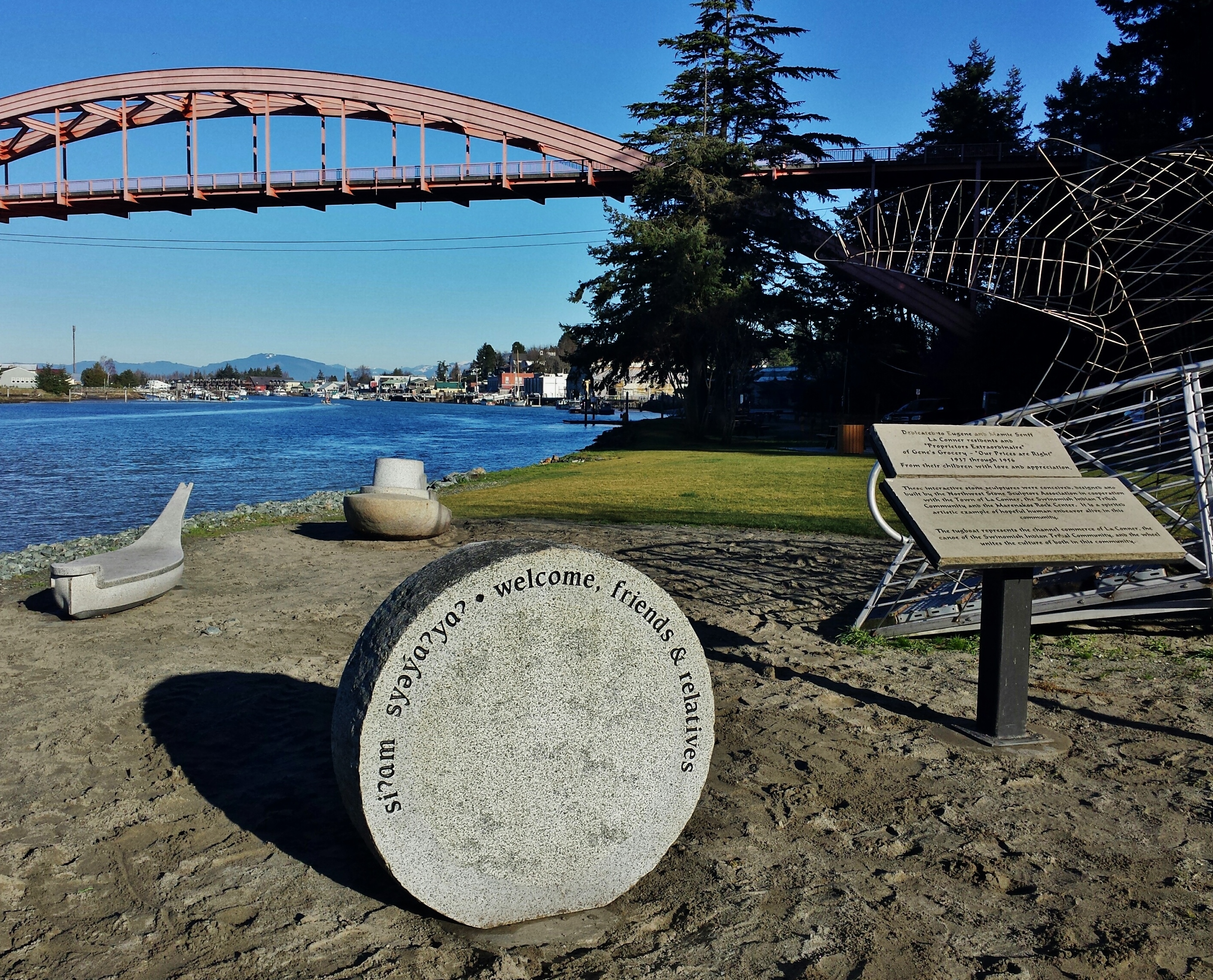

By Tracy Powell
Editors’ note: The day was bright and sunny; the kind of day that can draw stone carvers out into the open air to work and then drive them back inside when their hands and feet go numb. It was the end of the first week in December in La Conner, Washington and the outside temperature hovered around the 40 degree mark with a chilling breeze blowing up the Swinomish Channel.
A La Conner city work crew, dressed for the weather, was using a big forklift to transport two granite boats, a large wheel/drum and a reader board from the Skagit County Historical Museum, up on the hill, down to the new and still under construction Conner Waterfront Park. A half mile of boardwalk, now about half built, will connect the city center to the new Park, with shops and cafes on one side and the Swinomish Channel on the other.
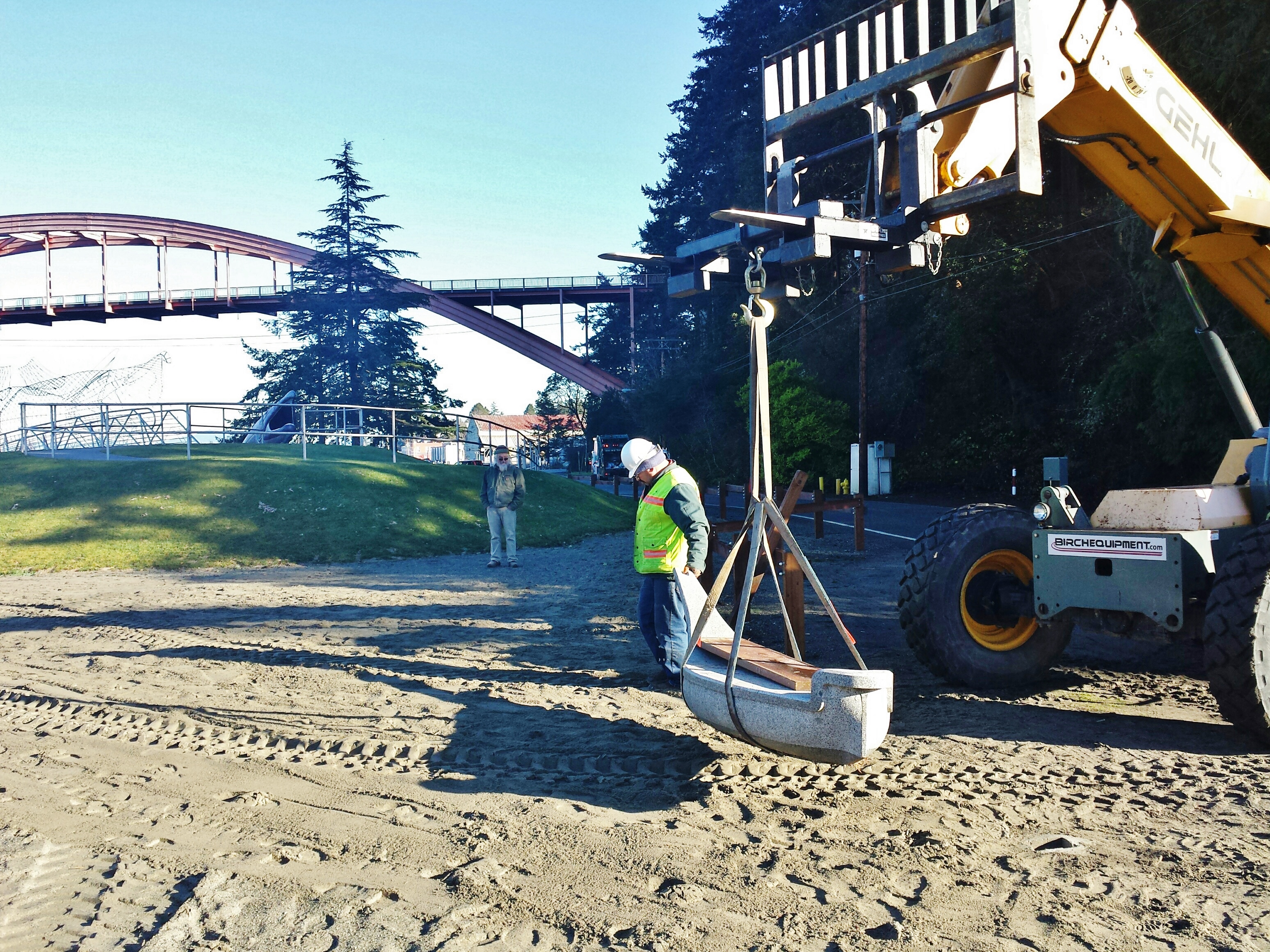 CROSSING POINT is the name Kalia Gentiluomo gave to her original project after a, now gone, pioneer swing bridge over the channel. In its final iteration, it included three pieces: a Native American canoe, a tugboat used by the settlers and a commemorative wheel/drum with inscription.
CROSSING POINT is the name Kalia Gentiluomo gave to her original project after a, now gone, pioneer swing bridge over the channel. In its final iteration, it included three pieces: a Native American canoe, a tugboat used by the settlers and a commemorative wheel/drum with inscription.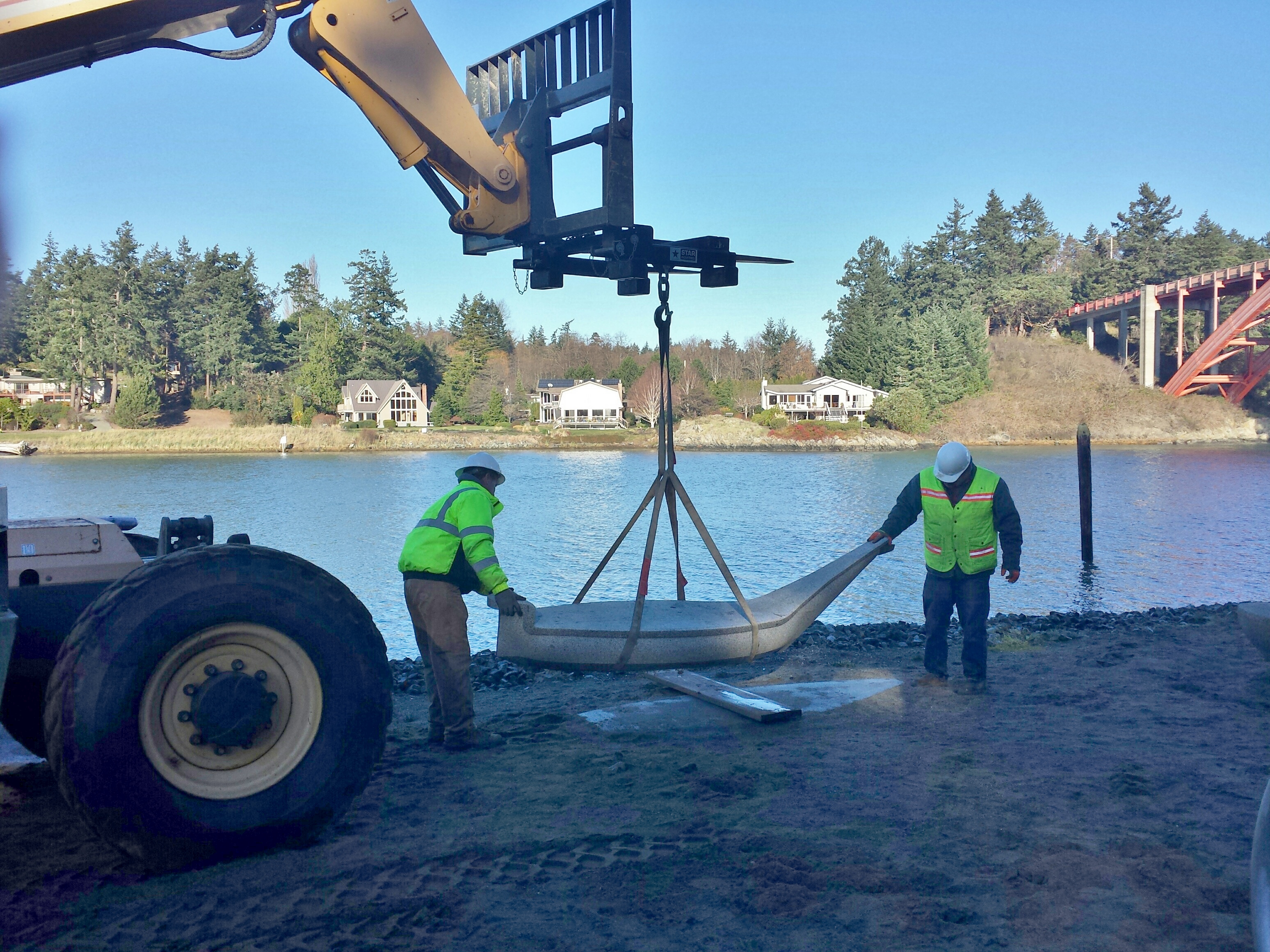
The initial carving work was done at the 2005 Camp Brotherhood Symposium by a host of NWSSA members using granite provided by Marenakos. It was a joy to behold the crowd of carvers, who spent the week joyfully drilling, wedging, hammering and grinding, to rough out all three pieces at once. When the symposium wrapped up, the sculptures went their separate ways, for their final carving and finishing. Kirk McLean took home the Tugboat and Dan Michael took the Canoe, and with the help of half a dozen heroic NWSSA carvers, finished them beautifully in the next several months. Lisa Ponder completed the third piece, the Wheel/Drum), by sandblasting the lettering, which reads “Welcome Friends and Relatives” in English and Lushootseed, the local native dialect. An interpretive sign was made by Marenakos, of Wilkeson sandstone.
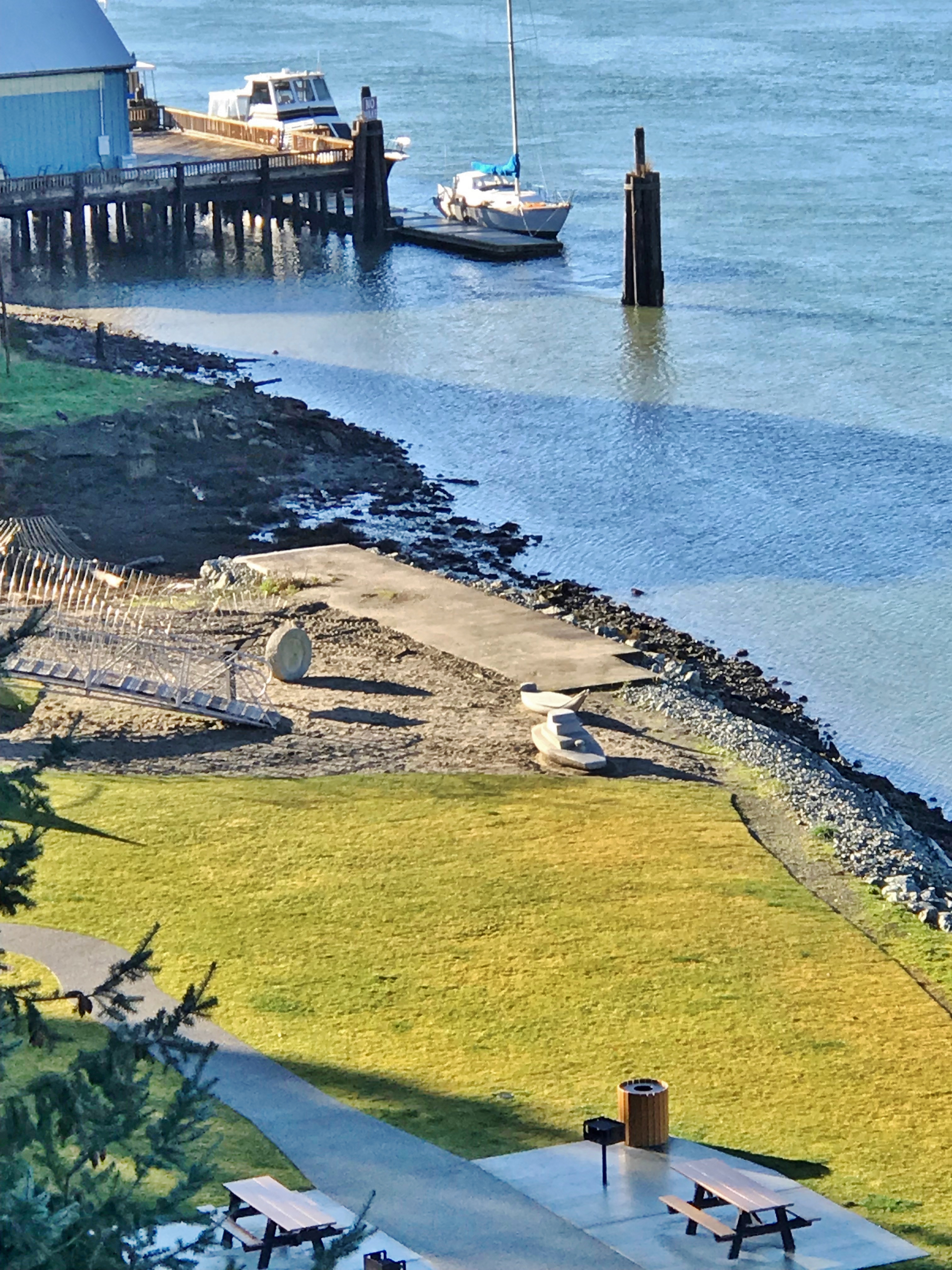
This ambitious collaborative project was presented to the Town of La Conner in 2008 as a tribute to the shared marine traditions of the Swinomish Tribe on Fidalgo Island and the pioneer settlers on the mainland. It was installed in Gilkey Square, at the west end of Morris St in La Conner, adjacent to the east landing of the old swing bridge. CROSSING POINT stayed there for a few years, and became a part of community activities such as concerts and holiday celebrations during that time.
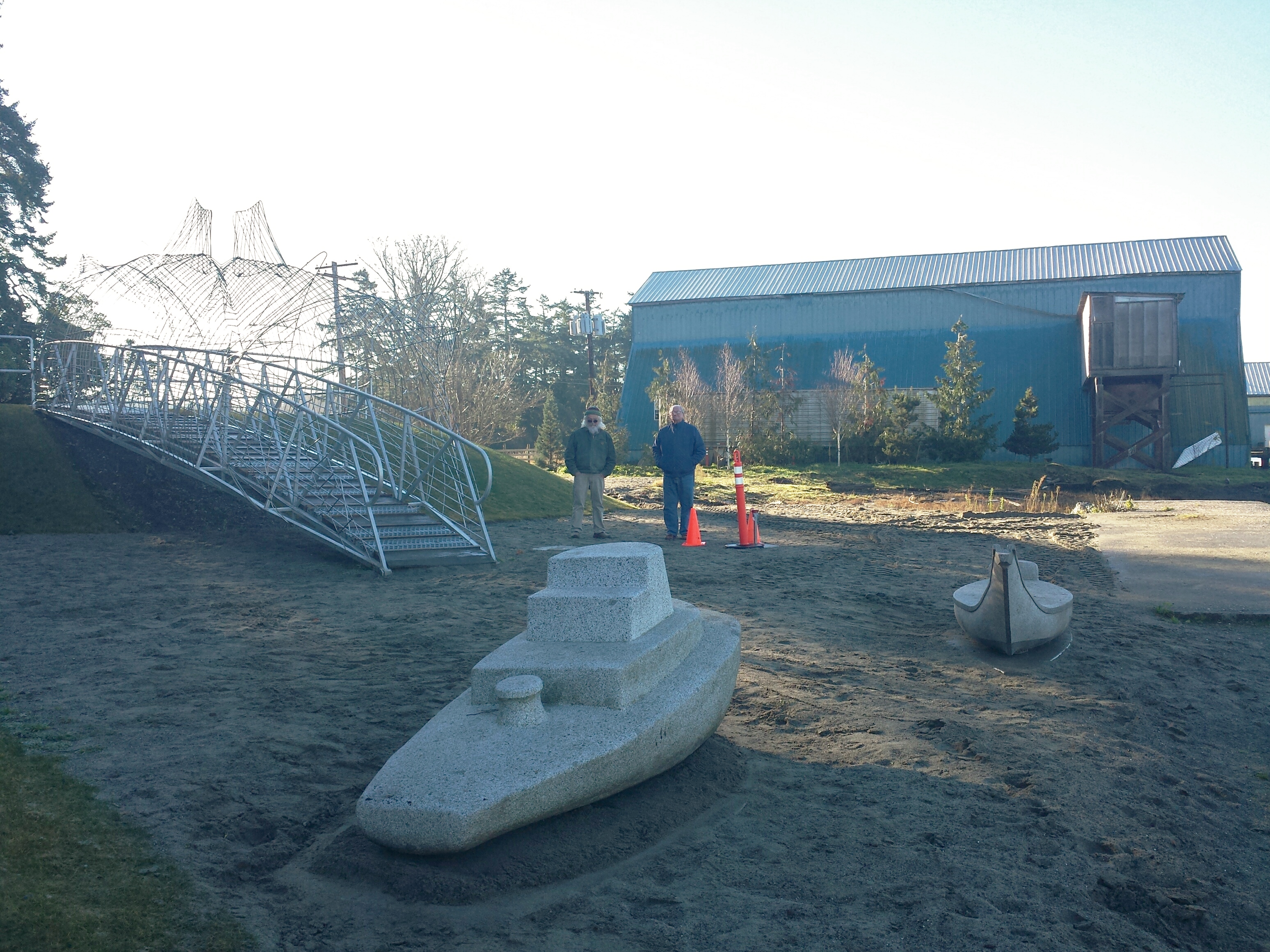
Then in need the year the Town decided to renovate the square, and so the sculpture group was moved a few blocks away, to the parking lot of the Skagit Historical Museum on top of the hill. They patiently waited there until this year, when the La Conner Park Commissioners discovered them there and decided they would be fine additions to their new Conner Waterfront Park.
Now their journey is complete. On December 7th they were all hauled back to the shore, and carefully placed together on the sand, within sight of their previous location, up the channel. They will once again become integral parts of a popular gathering spot where they can continue to remind residents and visitors of the shared marine heritage of the two neighboring communities, Swinomish Reservation and Town of La Conner. It is also appropriate that the name of NWSSA is back in public view.
